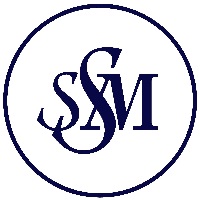
Steamship Mutual
Published: August 09, 2010
July 2002
Information from IMO Briefing 21/2002, 1 July 2002:
New rules on fire protection, fire detection and fire extinction
A revised SOLAS chapter II-2 (Construction - Fire protection, fire detection and fire extinction) enters into force, which also makes a new International Code for Fire Safety Systems (FSS Code) mandatory.
The revised chapter was developed over eight years by the Sub-Committee on Fire Protection and provides an entirely new structure for SOLAS chapter II-2 which may better accommodate the way port and flag States and ship designers deal with fire safety issues in the future.
The new structure focuses on the "fire scenario process" rather than on ship type, as the previous SOLAS chapter II-2 was structured. Thus, the regulations start with prevention, detection, and suppression following all the way through to escape. In addition, to make the revised SOLAS chapter II-2 more user-friendly, specific system-related technical requirements have been moved to the new International Fire Safety Systems Code and each regulation has a purpose statement and functional requirements to assist port and flag States.
The revised SOLAS chapter II-2 has a new part E that deals exclusively with human element matters such as training, drills and maintenance issues and a new part F that sets out a methodology for approving alternative (or novel) designs and arrangements.
International Fire Safety Systems (FSS) Code
Some of the original technical provisions of SOLAS chapter II-2 on fire protection have been transferred from the Convention to the Code, and many others are spelled out in greater detail in the Code. The main reason behind having a separate Code was to separate carriage and other statutory requirements, which clearly belong in the Convention and are meant for the Administration, from purely technical provisions, which are better suited for the Code and may be applied in a more user-friendly manner by equipment manufacturers, systems engineers, etc.
The purpose of the FSS Code is to provide international standards for fire safety systems required by revised SOLAS chapter II-2, under which it is made mandatory. The FSS Code consists of 15 chapters, each addressing specific systems and arrangements, except for chapter I which contains a several definitions and also general requirements for approval of alternative designs and toxic extinguishing media.
Application of chapter II-2 to existing ships
The new chapter II-2 applies to ships constructed on or after 1 July 2002. However, the chapter also applies to existing ships for the following regulations:
· All ships which undergo repairs, alterations, modifications and outfitting related thereto shall continue to comply with at least the requirements previously applicable to these ships. Such ships, if constructed before 1 July 2002, shall, as a rule, comply with the requirements for ships constructed on or after that date to at least the same extent as they did before undergoing such repairs, alterations, modifications or outfitting (regulation 1.3.1).
· Repairs, alterations and modifications which substantially alter the dimensions of a ship or the passenger accommodation spaces, or substantially increase a ship's service life and outfitting related thereto shall meet the requirements for ships constructed on or after 1 July 2002 in so far as the Administration deems reasonable and practicable (regulation 1.3.2).
· Combination carriers constructed before, on or after 1 July 2002 shall not carry cargoes other than oil unless all cargo spaces are empty of oil and gas-freed or unless the arrangements provided in each case have been be approved by the Administration taking into account the guidelines developed by the Organization (Guidelines for inert gas systems (MSC/Circ.353, as amended by MSC/Circ.387) (regulation 1.6.5).
· In cargo pump-rooms in tankers, temperature sensing devices for bulkhead shaft glands, bearings and pump casings shall be fitted; all pump-rooms shall be provided with bilge level monitoring devices together with appropriately located alarms; and a system for continuous monitoring of the concentration of hydrocarbon gases shall be fitted on all tankers constructed before 1 July 2002 by the date of the first scheduled dry-docking after 1 July 2002, but not later than 1 July 2005 (regulation 1.6.7).
· Emergency escape breathing devices (EEBD) - All existing ships must have these fitted not later than the date of the first survey after 1 July 2002 as follows: all ships shall carry at least two emergency escape breathing devices within accommodation spaces; in passenger ships, at least two emergency escape breathing devices shall be carried in each main vertical zone; in passenger ships carrying more than 36 passengers, two emergency escape breathing devices, in addition to those required above, shall be carried in each main vertical zone. (Regulations 13.3.4.2 to 13.3.4.5 - certain exemptions apply - see regulation 13.3.4.5). On all ships, within the machinery spaces, emergency escape breathing devices shall be situated ready for use at easily visible places, which can be reached quickly and easily at any time in the event of fire. The location of emergency escape breathing devices must take into account the layout of the machinery space and the number of persons normally working in the spaces. The number and location of EEBDs must be indicated in the fire control plan and they must comply with the Fire Safety Systems Code (regulation 13.4.3, which refers to the Guidelines for the performance, location, use and care of emergency escape breathing devices (MSC/Circ.849).)
· Part E - Operational requirements - All existing ships must comply with part E (except regulations 16.3.2.2 and 16.3.2.3 - relating to inert gas systems, as appropriate) not later than the date of the first survey after 1 July 2002. Part E includes regulation 14 on Operational readiness and maintenance; regulation 15 on Instructions, onboard training and drills; and regulation 16 on Operations.
· For new installations only on existing ships: Fire-extinguishing systems using Halon 1211, 1301, and 2402 and perfluorocarbons are prohibited for new installations (regulation 10.4.1.3).
· Deep-fat cooking equipment - for new installations on existing ships, the fire extinguishing systems for deep-fat cooking equipment must comply with regulation 10.6.4, including the requirement for an automatic or manual extinguishing system; a primary and backup thermostat with an alarm; arrangements for automatically shutting off the electrical power upon activation of the extinguishing system; an alarm for indicating operation of the extinguishing system in the galley where the equipment is installed; and controls for manual operation of the extinguishing system which are clearly labeled for ready use by the crew. (The regulation refers to the recommendations by the International Organization for Standardization, in particular, Publication ISO 15371:2000 on Fire-extinguishing systems for protection of galley deep-fat cooking equipment.)
· Passenger ships of 2,000 gross tonnage and above must comply not later than 1 October 2005 with regulations for fixed local application fire-fighting systems (regulation 10.5.6). The regulation requires certain machinery spaces above 500 m3 in volume to be protected by an approved type of fixed water-based or equivalent local application fire-fighting system. The regulation refers to Guidelines for the approval of fixed water-based local application fire-fighting systems for use in category A machinery spaces (MSC/Circ.913). Fixed local application fire-fighting systems are to protect areas such as the following without the necessity of engine shutdown, personnel evacuation, or sealing of the spaces: the fire hazard portions of internal combustion machinery used for the ship's main propulsion and power generation; boiler fronts; the fire hazard portions of incinerators; and purifiers for heated fuel oil.


